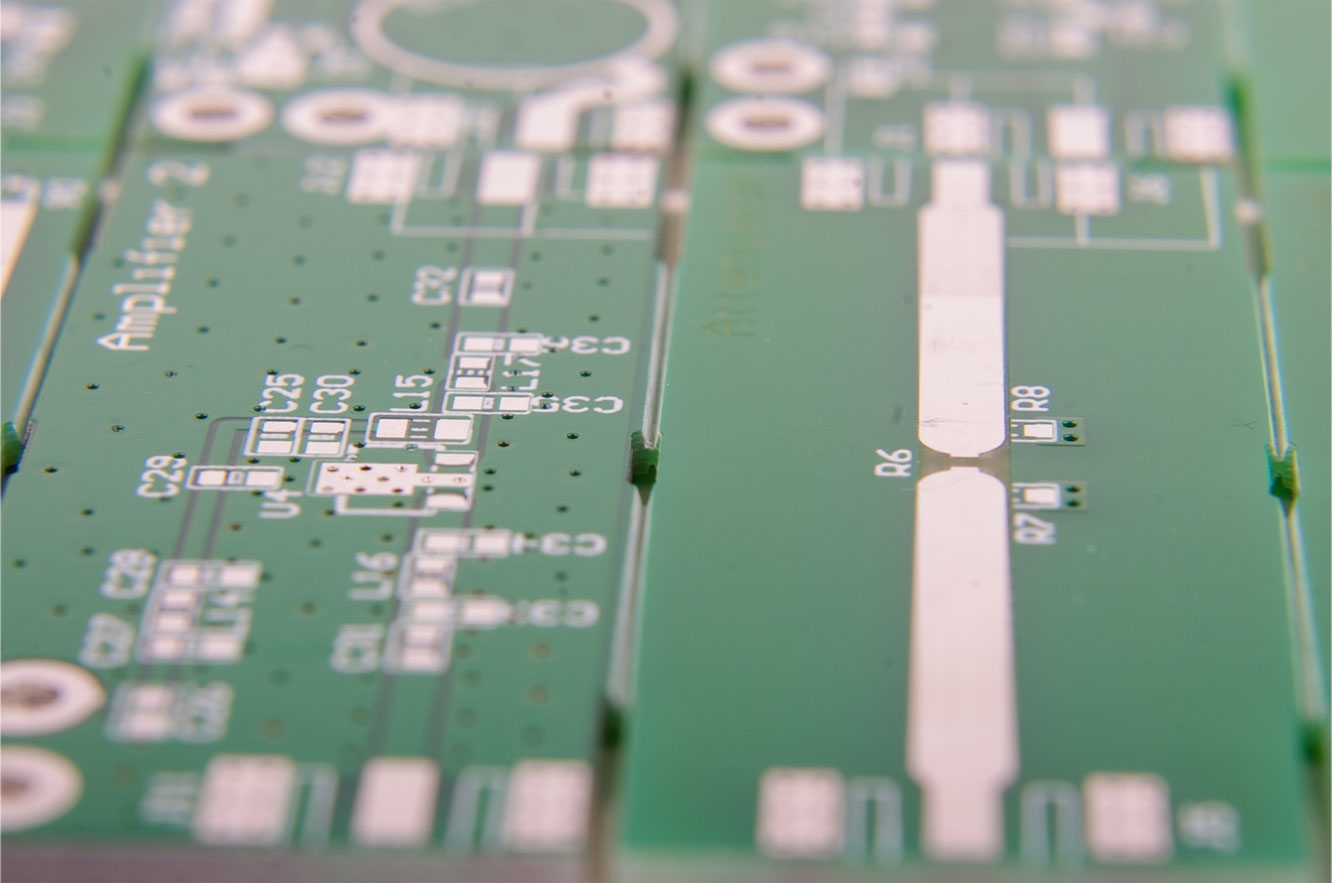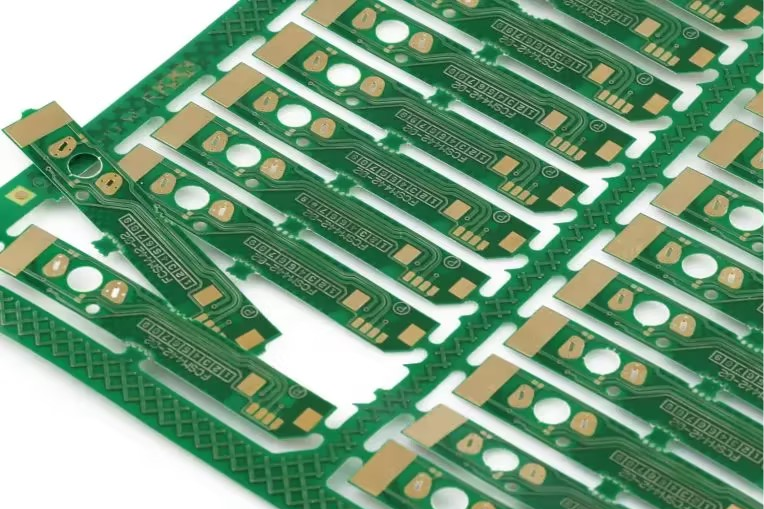Are you looking to design a custom-sized PCB for your Arduino project but unsure where to start? This guide from ALLPCB will walk you through every step, from understanding size limitations to creating unique shapes and soldering small components. Whether you're a beginner or a seasoned hobbyist, you'll find practical tips and detailed advice to make your project a success. Let's dive into the world of custom PCB design for Arduino and bring your ideas to life!
Why Design a Custom-Sized PCB for Your Arduino Project?
Arduino boards are fantastic for prototyping, but their standard sizes and layouts may not fit every project. Designing a custom-sized PCB allows you to optimize space, reduce clutter from wires, and create a professional-looking final product. Whether you're building a compact IoT device or a unique wearable, a tailored PCB can make all the difference. In this guide, we'll cover key aspects like Arduino PCB size limitations, custom shapes, component choices, and more to help you achieve the perfect design.

Understanding Arduino PCB Size Limitations
Before designing your custom PCB, it's crucial to understand the size limitations tied to Arduino projects. Standard Arduino boards like the Uno measure 68.6mm x 53.4mm, while the Nano is much smaller at 45mm x 18mm. However, when creating a custom PCB, you're not bound by these dimensions—but there are practical constraints to consider.
First, consider the enclosure or mounting space for your project. If you're designing for a specific case, measure the available area carefully to ensure your PCB fits. For example, a wearable device might need a PCB smaller than 30mm x 30mm to fit comfortably. Second, think about component density. Packing too many components into a tiny space can lead to overheating or signal interference. A general rule of thumb is to maintain at least 0.5mm spacing between traces for basic designs to avoid short circuits.
Lastly, manufacturing capabilities can impose limits. Most PCB fabrication services have minimum board sizes (often around 10mm x 10mm) and maximum sizes (up to 500mm x 500mm for standard orders). Always check the specifications of your chosen service to avoid design issues later. By keeping these Arduino PCB size limitations in mind, you can plan a board that’s both functional and feasible.
Creating Custom PCB Shapes for Arduino Projects
One of the most exciting aspects of designing a custom PCB is the ability to create unique shapes that match your project's needs. Standard rectangular boards might not always fit into irregular enclosures or artistic designs. Creating custom PCB shapes for Arduino projects allows for greater flexibility and creativity.
Start by sketching your desired shape based on the project requirements. For instance, a circular PCB might be ideal for a smartwatch, while a triangular board could suit a decorative LED display. Use PCB design software to draw the outline of your board. Most tools let you define the board shape by drawing a closed contour on the board edge layer.
Keep in mind that non-standard shapes can increase manufacturing costs due to additional milling or cutting processes. Also, ensure that critical components like the microcontroller, power supply, and connectors have enough space and proper alignment within the shape. Avoid sharp corners in your design, as they can weaken the board structure—opt for rounded edges with a radius of at least 1mm if possible.

Choosing Between Through-Hole vs SMD for Small Arduino PCBs
When designing small Arduino PCBs, one critical decision is whether to use through-hole or surface-mount device (SMD) components. Both have their advantages and challenges, especially when space is limited. Let's break down the debate of through-hole vs SMD for small Arduino PCBs to help you decide.
Through-Hole Components: These are larger components with leads that go through holes in the PCB and are soldered on the opposite side. They’re easier to work with for beginners because they’re simple to solder by hand and can be replaced without specialized tools. However, through-hole parts take up more space, making them less ideal for compact designs. For example, a through-hole resistor might need a footprint of 5mm x 2mm, plus additional clearance.
SMD Components: Surface-mount devices are soldered directly onto the PCB surface, saving significant space. They’re perfect for small Arduino PCBs, as an SMD resistor might only require a 1.6mm x 0.8mm footprint. The downside is that SMD components are trickier to solder, often requiring a steady hand or reflow soldering equipment. They’re also harder to replace if something goes wrong.
For most small Arduino projects, a mix of both can work well. Use SMD for passive components like resistors and capacitors to save space, and through-hole for larger parts like connectors or ICs that may need frequent swapping. Consider your soldering skills and project size when making this choice.

PCB Design Software for Beginners
Designing a custom PCB starts with the right tools. Fortunately, there are several PCB design software options for beginners that are user-friendly and often free. These tools help you create schematics, lay out your board, and generate files for manufacturing. Here are some popular choices to get you started with PCB design software for beginners.
Option 1: Free Software with a Community Focus - A widely used free tool offers an intuitive interface and a large library of components, including Arduino-specific parts. It’s perfect for hobbyists and supports both schematic capture and PCB layout. Tutorials and community forums are abundant, making it easy to learn.
Option 2: Browser-Based Design Tool - Another great choice is a cloud-based platform that requires no installation. It’s beginner-friendly with drag-and-drop features and integrates seamlessly with manufacturing services for quick ordering. It’s ideal if you want to avoid complex software setups.
Option 3: Open-Source Solution - An open-source PCB design tool offers advanced features for free, though it has a steeper learning curve. It’s highly customizable and supports complex designs, making it a good pick if you plan to grow your skills over time.
Start with a simple tool to learn the basics of schematic design and layout. Most software provides templates or libraries for Arduino components, so you can quickly place a microcontroller like the ATmega328P and connect it to other parts. Practice designing a small circuit first before tackling a full custom PCB.
Step-by-Step Guide to Designing Your Custom-Sized PCB
Now that you understand the basics, let’s walk through the process of designing a custom-sized PCB for your Arduino project. Follow these steps to go from concept to a finished design ready for manufacturing.
Step 1: Define Your Requirements - List all the components you’ll need, including the Arduino microcontroller (or a standalone chip like ATmega328P), sensors, and connectors. Determine the size and shape constraints based on your project enclosure or mounting needs.
Step 2: Create a Schematic - Using your chosen PCB design software, draw a schematic that connects all components. Ensure power lines (like 5V and GND) are clearly defined, and add decoupling capacitors (e.g., 0.1μF) near the microcontroller to stabilize voltage.
Step 3: Design the PCB Layout - Switch to the layout editor in your software. Set the board dimensions (e.g., 40mm x 30mm for a compact design) and place components logically—group related parts together to minimize trace length. Route traces with a width of at least 0.25mm for low-current signals and 0.5mm for power lines to handle currents up to 1A safely.
Step 4: Define the Board Shape - If you’re creating a custom shape, draw the outline on the board edge layer. Ensure there’s at least a 2mm margin from components to the edge to avoid damage during manufacturing.
Step 5: Check Design Rules - Run a design rule check (DRC) in your software to spot errors like overlapping traces or insufficient spacing. Fix any issues before finalizing.
Step 6: Export Manufacturing Files - Generate Gerber files and a Bill of Materials (BOM). These files are what you’ll send to a PCB fabrication service to produce your board.
This process might seem daunting at first, but with practice, you’ll get the hang of designing efficient and compact PCBs for your Arduino projects.
Soldering Tips for Small Components on Arduino PCBs
Once your custom PCB is manufactured and you’ve sourced your components, it’s time to assemble everything. Soldering small components can be challenging, especially if you’re working with SMD parts on a compact Arduino PCB. Here are some soldering tips for small components to ensure a clean and functional build.
Tip 1: Use the Right Tools - Invest in a fine-tip soldering iron (15-25W for precision work) and thin solder wire (0.5mm or 0.8mm diameter). Tweezers are essential for placing tiny SMD components, and a magnifying glass or microscope can help with visibility.
Tip 2: Start with SMD Components - If your board has both SMD and through-hole parts, solder the SMD components first. Apply a small amount of solder to one pad, place the component with tweezers, and reflow the solder to secure it. Then solder the other side. This prevents larger through-hole parts from getting in the way.
Tip 3: Avoid Excess Solder - Too much solder can create bridges between pads, causing shorts. Use just enough to form a small, shiny fillet around the component lead. For SMD resistors or capacitors, a dot of solder the size of a pinhead is often enough.
Tip 4: Practice Reflow Soldering - For multiple SMD components, consider using a hot air rework station or a reflow oven. Apply solder paste to the pads, place components, and heat the board to melt the paste evenly. This technique is faster and reduces the risk of damaging tiny parts with a soldering iron.
Tip 5: Clean and Inspect - After soldering, clean the board with isopropyl alcohol and a brush to remove flux residue. Inspect each joint under magnification to ensure there are no cold solder joints (dull or cracked appearance) or bridges.
Soldering small components takes patience and practice, but with these tips, you’ll achieve reliable connections even on the tiniest PCBs.
Troubleshooting Common PCB Design Issues
Even with careful planning, you might run into issues with your custom PCB design. Here are some common problems and how to fix them.
Signal Interference: If your Arduino project involves analog sensors or high-speed signals, nearby traces can cause interference. Keep analog and digital traces separate, and use ground planes to shield sensitive areas. Maintain at least 0.3mm spacing between high-speed signal traces to reduce crosstalk.
Power Supply Issues: Insufficient power delivery can cause your circuit to malfunction. Ensure power traces are wide enough (e.g., 0.5mm for 1A current) and place decoupling capacitors close to the microcontroller’s power pins to filter noise.
Component Misalignment: If components don’t fit during assembly, double-check your footprints in the design software. Always verify the dimensions of your parts against the library data before sending files for manufacturing.
By anticipating these issues during the design phase, you can save time and avoid costly revisions.
Final Thoughts on Designing Custom-Sized PCBs for Arduino
Designing a custom-sized PCB for your Arduino project is a rewarding process that can elevate your creations from messy prototypes to polished, professional devices. By understanding Arduino PCB size limitations, experimenting with custom shapes, choosing between through-hole and SMD components, using beginner-friendly PCB design software, and mastering soldering tips for small components, you’re well on your way to success.
Start small with a simple design to build your skills, and don’t hesitate to iterate based on what you learn. With each project, you’ll gain confidence in creating PCBs that perfectly fit your vision. ALLPCB is here to support you with high-quality fabrication services to turn your designs into reality. Take the first step today and transform your Arduino ideas into compact, efficient circuits!
 ALLPCB
ALLPCB







